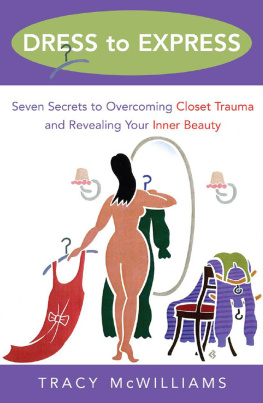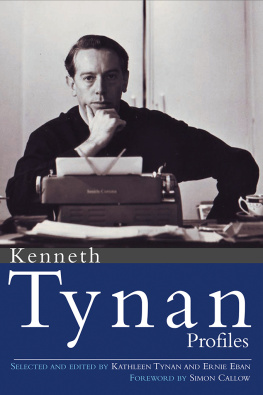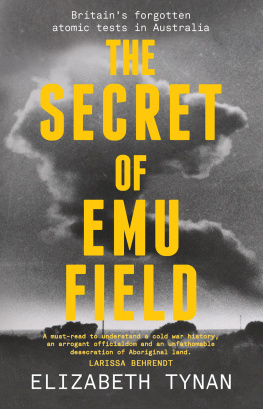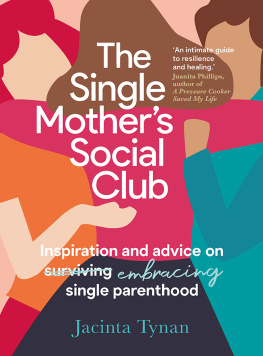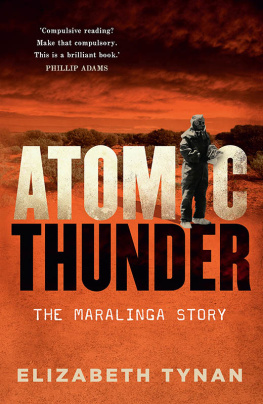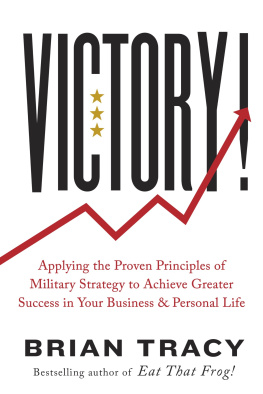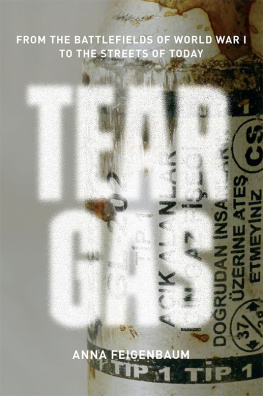Tracy Tynan - Wear and Tear
Here you can read online Tracy Tynan - Wear and Tear full text of the book (entire story) in english for free. Download pdf and epub, get meaning, cover and reviews about this ebook. publisher: Scribner, genre: Non-fiction. Description of the work, (preface) as well as reviews are available. Best literature library LitArk.com created for fans of good reading and offers a wide selection of genres:
Romance novel
Science fiction
Adventure
Detective
Science
History
Home and family
Prose
Art
Politics
Computer
Non-fiction
Religion
Business
Children
Humor
Choose a favorite category and find really read worthwhile books. Enjoy immersion in the world of imagination, feel the emotions of the characters or learn something new for yourself, make an fascinating discovery.

- Book:Wear and Tear
- Author:
- Publisher:Scribner
- Genre:
- Rating:4 / 5
- Favourites:Add to favourites
- Your mark:
- 80
- 1
- 2
- 3
- 4
- 5
Wear and Tear: summary, description and annotation
We offer to read an annotation, description, summary or preface (depends on what the author of the book "Wear and Tear" wrote himself). If you haven't found the necessary information about the book — write in the comments, we will try to find it.
Wear and Tear — read online for free the complete book (whole text) full work
Below is the text of the book, divided by pages. System saving the place of the last page read, allows you to conveniently read the book "Wear and Tear" online for free, without having to search again every time where you left off. Put a bookmark, and you can go to the page where you finished reading at any time.
Font size:
Interval:
Bookmark:
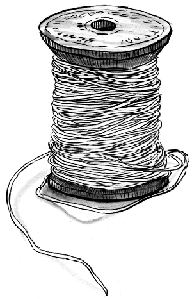


Scribner
An Imprint of Simon & Schuster, Inc.
1230 Avenue of the Americas
New York, NY 10020
www.SimonandSchuster.com
Copyright 2016 by Tracy Tynan
All rights reserved, including the right to reproduce this book or portions thereof in any form whatsoever. For information, address Scribner Subsidiary Rights Department, 1230 Avenue of the Americas, New York, NY 10020.
First Scribner hardcover edition July 2016
SCRIBNER and design are registered trademarks of The Gale Group, Inc., used under license by Simon & Schuster, Inc., the publisher of this work.
For information about special discounts for bulk purchases, please contact Simon & Schuster Special Sales at 1-866-506-1949 or .
The Simon & Schuster Speakers Bureau can bring authors to your live event. For more information or to book an event, contact the Simon & Schuster Speakers Bureau at 1-866-248-3049 or visit our website at www.simonspeakers.com.
Interior design by Jill Putorti
Endpaper image Shutterstock
Jacket design by Kristen Haff
Jacket photo of Kenneth Tynan and Elaine Dundy, The Daily Mail Ideal Home Book 1957, courtesy of Daily Mail/Solo Syndication
Library of Congress Control Number: 2015031108
ISBN 978-1-5011-2368-9
ISBN 978-1-5011-2370-2 (ebook)
Excerpt from Calypsos Song to Ulysses by Adrian Mitchell is reprinted with the permission of United Agents on behalf of the Estate of the late Adrian Mitchell.
Chapter opening illustrations by Andrea Dietrich; Introduction photo Daily Mail /Solo Syndication; Chapter 25 photo by Douglas Kirkland; Chapter 33 photo by Alexander Ruas; Chapter 35 photo by Kara Fox
For Jim, without whom
Clothes make the man.
Naked people have little or no influence in society.
MARK TWAIN
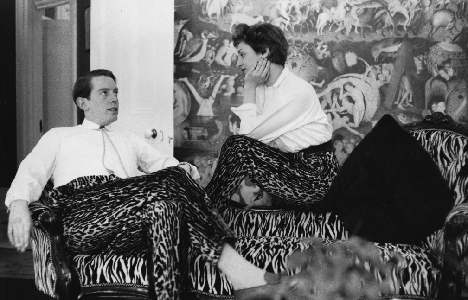
INTRODUCTION
Why Clothing?
My earliest clothing memory is my mothers silky, soft sealskin coat. I must have been about four or five. We were at a party. It was a grown-up party and I was the only kid. Bored, I wandered into a bedroom and saw an inviting pile of coats heaped on the bed. I climbed on top and immediately recognized my mothers coat. It smelled of hera mixture of her perfume, Ma Griffe, and her cigarettes, unfiltered Pall Malls. The idea that my mother could be present in a piece of clothing where she otherwise was not was a revelation. I pulled the coat off the bed and wrapped myself up in it. The glossy brown fur had a velvety touch, like the baby rabbits that she had allowed me to pet at my friends house. I spread the coat out on the floor and lay on top of it, luxuriating in the feel of the fur against my bare legs and arms. The fur had a nap to it, becoming darker or lighter depending on which way I rubbed it. For a while I entertained myself by tracing patterns on the coat. Eventually I fell asleep. I was awakened by a group of adults whispering above me: Shhh, dont wake her isnt she adorable?
I saw my mother bending toward me. Come on, darling, its time to go home.
Can I wear your coat? Please, I begged, reluctant to leave my cozy nest.
Dont be silly, its way too big for you, my mother said as she handed me my scratchy blue wool coat, which I reluctantly put on. She slipped on her coat and held out her hand. I took it, nuzzling into her furry sleeve as we said our goodbyes and left the party, and even today, over fifty years later, whenever I think of my mother, I remember the touch, the feel, and the smell of her fur coat.
I think I was destined to be obsessed with clothing, genetically speaking. My middle name is Peacockfrom my fathers side of the family. (He was a bastard: His mothers name was Tynan, and his fathers name was Peacock.) My father, Kenneth Peacock Tynan, was a writer and theater critic, but before he had ever published a single sentence, he was known for his unique style of dress. In 1945 he fled provincial Birmingham and arrived at Magdalen College in Oxford with trunks filled with outlandish clothing: a cape lined in blood-red satin and a suit of purple doeskin flannel. Later, the British theater critic Alan Brien spotted my father rushing around Oxford, wearing a bottle-green suit purportedly made from the baize that covers billiard tables. The writer Paul Johnson, in his book Modern Times, described my father as a tall, beautiful, epicene youth, with pale yellow locks, Beardsley cheekbones, fashionable stammer, plum-colored suit, lavender tie and ruby signet-ring. Everyone noticed not only what my father said but also how he dressed.
My mother, the writer Elaine Dundy, was no slouch in the clothing department, either. She was a petite gamine with blond curly hair and a curvaceous figure well suited to the cinched-waist fashions of the times. Born in 1921, she spent her late twenties in Paris, and there she discovered that the fashion houses had sample sales where designer clothing could be bought for a fraction of its original cost. Her best friend, the writer Judy Feiffer, described how glamorous my mother looked in an off-the-shoulder orange-and-brown silk Schiaparelli dress, which she wore on her first date with my father in 1950.
Fifty years later, in my mothers memoir, Life Itself, she described what my father was wearing on that memorable first encounter at the Buckstone Club, in the heart of Londons theater district: A double breasted camels hair jacket, plum colored trousers, yellow socks and black shoes, and a Mickey Mouse wrist watch. Impressed with each others attire, their mutual passion for theater, and their strong attraction, they married three months later.
In 1957 the Daily Mail did a feature on my parents and their flat in London called New Dcor in a Victorian Flat. There is a photo of them, lounging on a faux-zebra-skin chaise longue, wearing matching faux-leopard-skin pants, white shirts, and string ties, gazing into each others eyes. I was only five years old and probably oblivious of how outrageous their outfits must have appeared, but as I grew older, I became aware that they, particularly my father, dressed very differently from my friends parents.
From an early age, I had firm ideas about my own clothing. Going shopping with my mother was frustrating for both of us because I always knew what I wanted and wouldnt settle for less. When I was fourteen, she abandoned the struggle and gave me a clothing allowance, and that was when my interest really took hold. I enjoyed the hunt, searching for the perfect piece that matched what I had envisioned. Unlike most of my friends in the early 1960s, I liked shopping. I liked exploring different stores, checking out various styles, and trying on assorted outfits. This was before the days of swinging London and Carnaby Street; there were no malls, just a handful of department stores and boutiques, and for most people, shopping was a chore. There was no retail therapy, and the concept of fashionista did not exist. But for me, shopping for clothing was my art, my body was my canvas, and in those stores I could decide the shapes and colors through which I would express myself.
Trying on clothes gave me an opportunity, albeit briefly, to test out different identities. With the pull of a zipper or the buckle of a belt, I could change the way I looked: jeans and a jeans jacket and I became a tomboy; a short skirt and a tight top, I was a femme fatale. I could make myself look younger or older, ingnue or sophisticate, according to my mood or the situation.
Next pageFont size:
Interval:
Bookmark:
Similar books «Wear and Tear»
Look at similar books to Wear and Tear. We have selected literature similar in name and meaning in the hope of providing readers with more options to find new, interesting, not yet read works.
Discussion, reviews of the book Wear and Tear and just readers' own opinions. Leave your comments, write what you think about the work, its meaning or the main characters. Specify what exactly you liked and what you didn't like, and why you think so.


